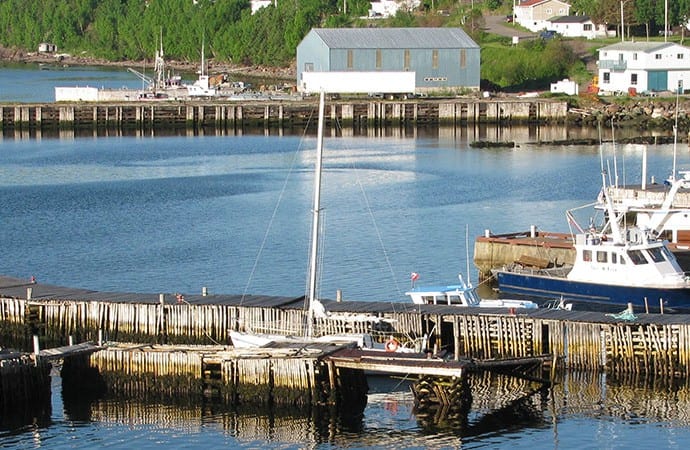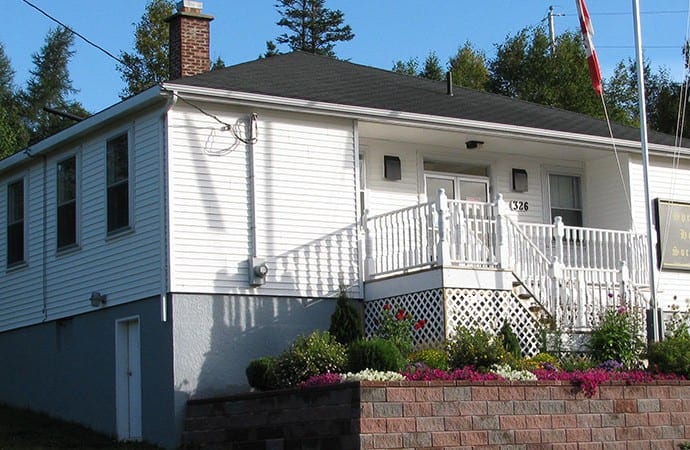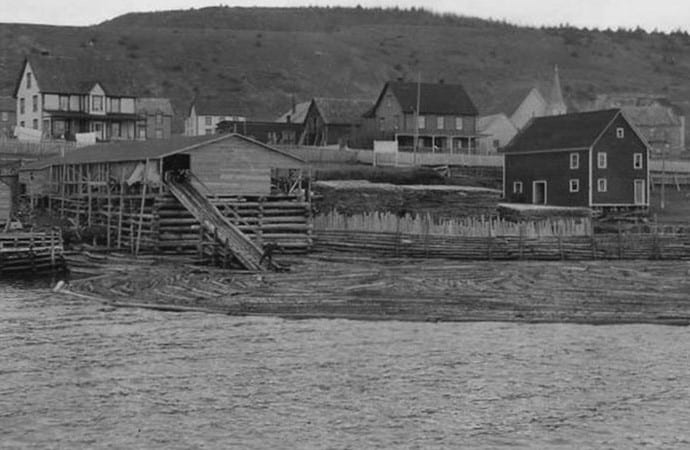THE MI’KMAQ PRESENCE IN HALL’S BAY
The Mi’kmaq, once known as Micmacs, have a long history in Newfoundland. They originally crossed from Cape Breton and settled in St. George’s Bay, from where they travelled the island hunting and tending extensive trap lines. Before long they had become familiar with the lakes and river systems of the interior.
They developed well-known walking trails and canoe routes that eventually took them to, among other places, Hall’s Bay on the northeast coast. Note the following account from A Journey Across Newfoundland: “… my friend Ensor had just completed the arduous task of crossing the island from west to east, which has not been attempted except by Indians for many years. He entered at Sandy Point in St. George’s Bay and came out at Hall’s Inlet [Hall’s Bay}. He was accompanied by two Indians as guides. The greater part of the journey was performed on large lakes.” Obviously the Indian guides knew the area from having travelled it before. The large lakes were Grand Lake, Sandy Lake, and Birchy Lake, all of which were virtually connected, with a short portage providing easy access to Indian Ponds and then Indian River, which empties into Hall’s Bay. Besides Indian River, two other large streams – South Brook and West Brook – were such natural routes to and from the interior that it is not surprising that by 1894 as many as thirty families had made their homes at points along the bottom of the bay.
Today it is interesting to take a boat ride “up the bay” with someone who is familiar with the area and observe the landmarks that at one time were inhabited by the Mi’kmaq. You will be introduced to Andrew Joe’s Point, Beachy Cove, Dock Point, Goodyear’s Cove, and Wigwam Point, all of which are featured prominently in local Mi’kmaq history.
Go ashore at Dock Point and take the trail into the woods. You will enter a large clearing, once the homestead of the Bushy’s, a Mi’kmaq family. Cross the small brook to your right and climb the little hill overlooking Hall’s Bay and you will find yourself standing on an old, overgrown Mi’kmaq cemetery. A crude sign marks the spot.
In 1892 an American named Holberston took a caribou hunting trip in the White Hills-Gaff Topsail area. Disembarking from a large vessel at Pilley’s Island, he hired a Mi’kmaq guide named Peter Joe of Hall’s Bay to take him in a small boat to the bottom of the bay and the entrance to West Brook, from which he would gain access to the interior. Two years later another American named S.T. Davis duplicated Holbertson’s trip. Passing along by Dock Point, he remarked on the curious sight of a Catholic Church sitting on a high point of land with both a Christian cross and a totem pole standing in front of the cemetery. That’s the cemetery on which you are standing.
After your boat ride, research some Halls’s Bay Mi’kmaq names. Given that there were at one time up to thirty families, there are many, but I will mention only a few. Richard Lebeuf, 25, of Hall’s Bay in 1883 married Eliza Goodyear, 17, daughter of Richard Goodyear of Goodyear’s Cove. The 1921 Census for Beachy Cove identified Maggie Saunders, a “Micmac Indian”, as the wife of Thomas Saunders, and it lists Michael and Stephen Stephenson as “Micmac” brothers living in the same place. Incidentally, the records show that this same Stephen Stephenson had sole hunting and trapping rights for the area between Hall’s Bay and Humber River. At Dock Point there were Joanna Bushy, a widowed “Micmac” Indian, and Levi Joe, who was married to Prora Joe from Cape Breton.
Certainly the most fascinating would be Matty Mitchell. He was born in Hall’s Bay in 1844 and, because the old Mitchell family had hereditary chieftaincy, he was permitted, unlike other Mi’kmaq, to hunt and trap anywhere he pleased on the island. He became a well-known hunter, trapper, guide, and prospector. It is he who is credited with discovering the ore body that was to become the highly profitable Buchans mine. In the winter of 1908, as part of an experiment to introduce reindeer to the island, he performed the monumental task of guiding a herd of 50 Lapland reindeer s on a 400 mile trek from St. Anthony to Millertown. Mitchell knew the island well, but he was perhaps most familiar with the Northern Peninsula. For years he tended trap lines into the peninsula from Bonne Bay, and today as you travel through Gros Morne Park you will come to a rest area near the bottom of Bonne Bay with a large monument erected at the entrance to Matty Mitchell’s trail. A plaque highlights his achievements. And it started at Hall’s Bay.
When the Little Bay Mines were in their heyday, the Twillingate Sun regularly reported news from Hall’s Bay. Occasionally there was reason to mention the people, and when it did the reference was usually to “the Indians of Hall’s Bay”. These “Indians of Hall’s Bay” were actually the Mi’kmaq. Today they have virtually disappeared from this area. Why they left is a question for another time, but their presence was an important chapter in the history of Hall’s Bay. We should not forget them.


